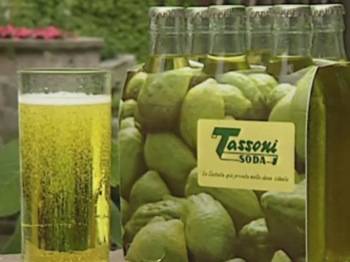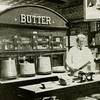Sustainable Soft Drinks: Sodas Made in Italy
Non-carbonated soft drinks were first marketed in the West in the 17th century. The drinks were made with water and lemon juice sweetened with apples. In the 18th century scientists helped create what would become modern mineral water.
In 1767 Englishman Joseph Priestley was the first to discover a method for infusing water with carbon dioxide to create sparkling water. His discovery was called soda water—the major ingredient for all soft drinks. From that point on, the manufacturing of carbonated drinks has never let up.
Italian companies in Italy have used regional fruit to make soft drinks for over a century, but “sodas” (as they’re known) have only recently come back into fashion after vanishing almost entirely from the market. Nowadays it’s not hard to find alternatives to the usual brand name sodas in supermarkets, bars and restaurants.
Chinotto Lurisia
Chinotto, the sour fruit of the myrtle-leaved orange tree, is grown along the Riviera Ligure from Varazze to Finale, although the plant originally comes from China. Around 1500 a sailor from Savoy transplanted it along the Ligurian coast, an ideal location for the plant. Over time its organoleptic properties improved. The same fruit is today used to make the syrup for the famous bitter orange soft drink known as Chinotto.
Niasca Lemonade and Gazzosa –Lurisia
Lemons have been used for making glazes, distillates and liquors for a long time. Today they’re also used to produce quality soft drinks. In Liguria, near the beautiful town of Portofino, a variety of lemons is used to make a unique brand of lemonade with a retro flavor. Gazossa is made from the sfusato lemons of the Amalfi coast that were brought back from the brink of disappearance by Slow Food. The tasty drink produced in Campania is less sour than Liguria’s lemonade.
Cedrata Tassoni
Cedrata Tassoni is among the oldest soft drinks in Italy. The unforgettable drink was born in 1956 and marketed as the “evolution” in citron syrup by nobleman and pharmacist Nicola Tassoni. The recipe was originally made with “Cytrus Medica” cultivated on the coast of Lake Garda. Today the drink is made with a variety from Calabria called “diamond” citrus.
San Pellegrino Aranciata
The Arancia Rossa di Sicilia (Sicilian blood orange) is considered the queen of citrus fruit. There are three types used to make excellent drinks: the Moro, the Tarocco and the Sanguinello. Of the varieties, the Moro matures earliest, at the beginning of December. Its rind has an orange blush with hints of red; the seedless flesh is dark red, especially when fully ripe, and very juicy. It has a sweet and slightly sour taste. The Tarocco tree produces a lot of fruit from December to May. The rind has a yelloworange color with red tones. The seedless pulp is also yellow-orange, with reddish streaks that vary in intensity depending on when it’s picked. It is juicy and tasty. The Sanguinello starts to ripen in February but is largely harvested between March and April. The fruit is mediumsized with an intense orange color and hints of red. The pulp is seedless, or almost seedless, orange-colored with blood red streaks, very juicy and tastes excellent.
Cola Baladin
The name may make you think of the most globalized drink in the world, but it’s not the same thing. Kola is a fruit in the same family as cocoa, and is native to tropical forests in West Africa. There are approximately 140 species of cola. Cola nitida (also known as the Kola nut) contains caffeine, tannin and theobromine. Syrup from these nuts is used to make a drink that people in Sierra Leone imbibe during ceremonial rituals to bid farewell to guests and are considered a symbol of friendship. “Cola Baladin” is produced with the kola nuts bought from the Kola Slow Food Presidium in Sierra Leone, and part of the revenues from the its sales are donated to the Slow Food Foundation for Biodiversity to support the Presidium project.








































Comments
Cedrata in USA